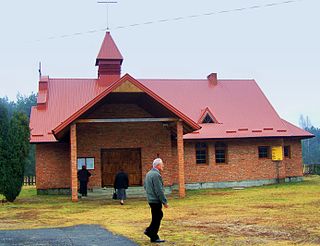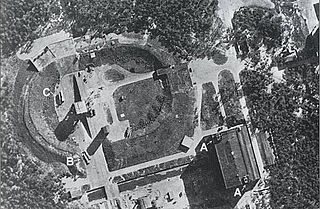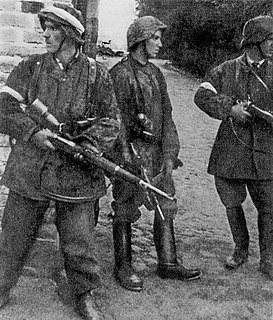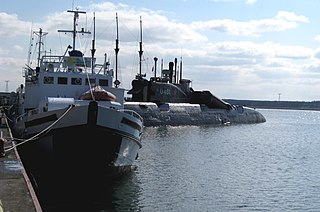
The Peenemünde Army Research Center was founded in 1937 as one of five military proving grounds under the German Army Weapons Office (Heereswaffenamt). Several German guided missiles and rockets of World War II were developed by the HVP, including the V-2 rocket. The works were attacked by the British in Operation Crossbow from August 1943, before falling to the Soviets in May 1945.

The V-2, with the technical name Aggregat 4 (A4), was the world's first long-range guided ballistic missile. The missile, powered by a liquid-propellant rocket engine, was developed during the Second World War in Germany as a "vengeance weapon" and assigned to attack Allied cities as retaliation for the Allied bombings against German cities. The V-2 rocket also became the first artificial object to travel into space by crossing the Kármán line with the vertical launch of MW 18014 on 20 June 1944.

The European Theatre of World War II opened with the German invasion of Poland on Friday September 1, 1939, followed by the Soviet invasion of Poland on September 17, 1939. On 6 October, following the Polish defeat at the Battle of Kock, German and Soviet forces gained full control over Poland. The success of the invasion marked the end of the Second Polish Republic, though Poland never formally surrendered. A Polish Underground State with a government-in-exile that would eventually set up headquarters in London resumed the struggle against the occupying powers. The Polish forces in the West, as well as in the East and an intelligence service were established outside of Poland, and contributed to the Allied effort throughout the war.

The Home Army was the dominant resistance movement in German-occupied Poland during World War II. The Home Army was formed in February 1942 from the earlier Armed Resistance established in the aftermath of the German and Soviet invasions in September 1939. Over the next two years, the Home Army absorbed most of the other Polish underground forces. Its allegiance was to the Polish government-in-exile in London, and it constituted the armed wing of what came to be known as the Polish Underground State.

Blizna is a village in the administrative district of Gmina Ostrów, within Ropczyce-Sędziszów County, Subcarpathian Voivodeship, in south-eastern Poland. It lies approximately 12 kilometres (7 mi) north of Ostrów, 12 km (7 mi) north of Ropczyce, and 34 km (21 mi) north-west of the regional capital Rzeszów. It has a population of about 250.

Test Stand VII was the principal V-2 rocket testing facility at Peenemünde Airfield and was capable of static firing of rocket motors up to 200 tons thrust. Notable events at the site include the first successful V-2 launch on 3 October 1942, visits by German military leaders, and Allied reconnaissance overflights and bombing.
The Aggregat series was a set of ballistic missile designs developed in 1933–45 by a research program of Nazi Germany's Armed Forces (Wehrmacht). Its greatest success was the A4, more commonly known as the V-2.

Antoni Kocjan was a renowned Polish glider constructor and a contributor to the intelligence services of the Polish Home Army during World War II.

The Polish resistance movement in World War II, with the Polish Home Army at its forefront, was the largest underground resistance movement in all of occupied Europe, covering both German and Soviet zones of occupation. The Polish resistance is most notable for disrupting German supply lines to the Eastern Front, providing intelligence reports to the British intelligence agencies, and for saving more Jewish lives in the Holocaust than any other Western Allied organization or government. It was a part of the Polish Underground State.

Operation Most III or Operation Wildhorn III was a World War II operation in which Poland's Armia Krajowa provided the Allies with crucial intelligence on the German V-2 rocket.

Peenemünde Airfield is an airfield along the Baltic Sea north of Peenemünde, Germany. Today round trips in light aircraft take place from Peenemünde Airfield. Bus tours are also available, on which one can visit the former shelters of the NVA and the remnants of the V-1 flying bomb facilities. Because of its long runway the airfield Peenemünde is also a location for flight schools.

Sędziszów Małopolski is a town in Ropczyce-Sędziszów County, Subcarpathian Voivodeship, Poland, with a population of 12,226 (1 January 2019). Sędziszów is located in eastern Lesser Poland, near the historic boundary between Lesser Poland and Red Ruthenia. The name of the town probably comes from ancient Polish given name Sąd, which was popular in the noble Odrowąż family in the 13th century. In the past, Sędziszów was also known as Shendishov, Sandissów, Sandyszów, Schandzyssów, and Sandzischów. The town is home to a sports club Lechia, established in 1914.

Organizacja Wojskowa Związek Jaszczurczy was an organization of Polish resistance in World War II. Created in 1939 and transformed into National Armed Forces in 1942, it represented the far-right of the Polish political spectrum and thus refused to recognize the internationally recognized Polish Underground State. It also refused to recognize the Soviet-aligned Polish Committee of National Liberation and continued to try and resist the new Polish Communist regime following the war.

Tajne Wojskowe Zakłady Wydawnicze was the secret printing and publishing house of the Polish Underground State in Warsaw, Nazi-occupied Poland. It was run, from its creation in late 1940 to disbandment in early 1945, by Jerzy Rutkowski of Bureau of Information and Propaganda of the Polish resistance.

V-2 rocket facilities were military installations associated with Nazi Germany's V-2 SRBM ballistic missile, including bunkers and small launch pads which were never operationally used.

Peenemünde is a municipality on the Baltic Sea island of Usedom in the Vorpommern-Greifswald district in Mecklenburg-Vorpommern, Germany. It is part of the Amt of Usedom-Nord. The community is known for the Peenemünde Army Research Center, where the world's first functional large-scale liquid-propellant rocket, the V-2, was developed.
Augustyn Träger, codenames Sęk (Knot) and Tragarz (Porter), was a Polish-Austrian soldier during World War I and an intelligence officer in interwar and German-occupied Poland. Along with his son, Roman Träger, he played an important role in obtaining intelligence on the German V-1 and V-2 missiles which were being tested on the island of Usedom in Pomerania. He passed the information along to the Polish resistance organization Home Army, which then passed it on to the Allies in London. This led to the Allied bombing of Peenemünde in Operation Hydra in 1943.

Roman Träger, codename "T2-AS", was a Polish soldier and intelligence officer during the Nazi occupation of Poland.

The V-2 missile launch site, Blizna was the site of a World War II German V-2 missile firing range. Today there is a small museum located in the Park Historyczny Blizna in Blizna, Poland. After the RAF strategic bombing of the V-2 rocket launch site in Peenemünde, Germany, in August 1943, some of the test and launch facilities were relocated to Blizna in November 1943. The first of 139 V-2 launches was carried out from the Blizna launch site on 5 November 1943.


















